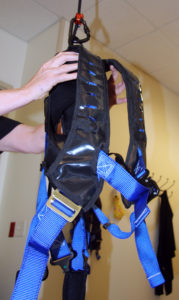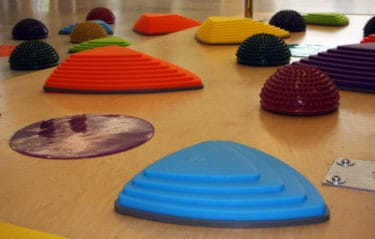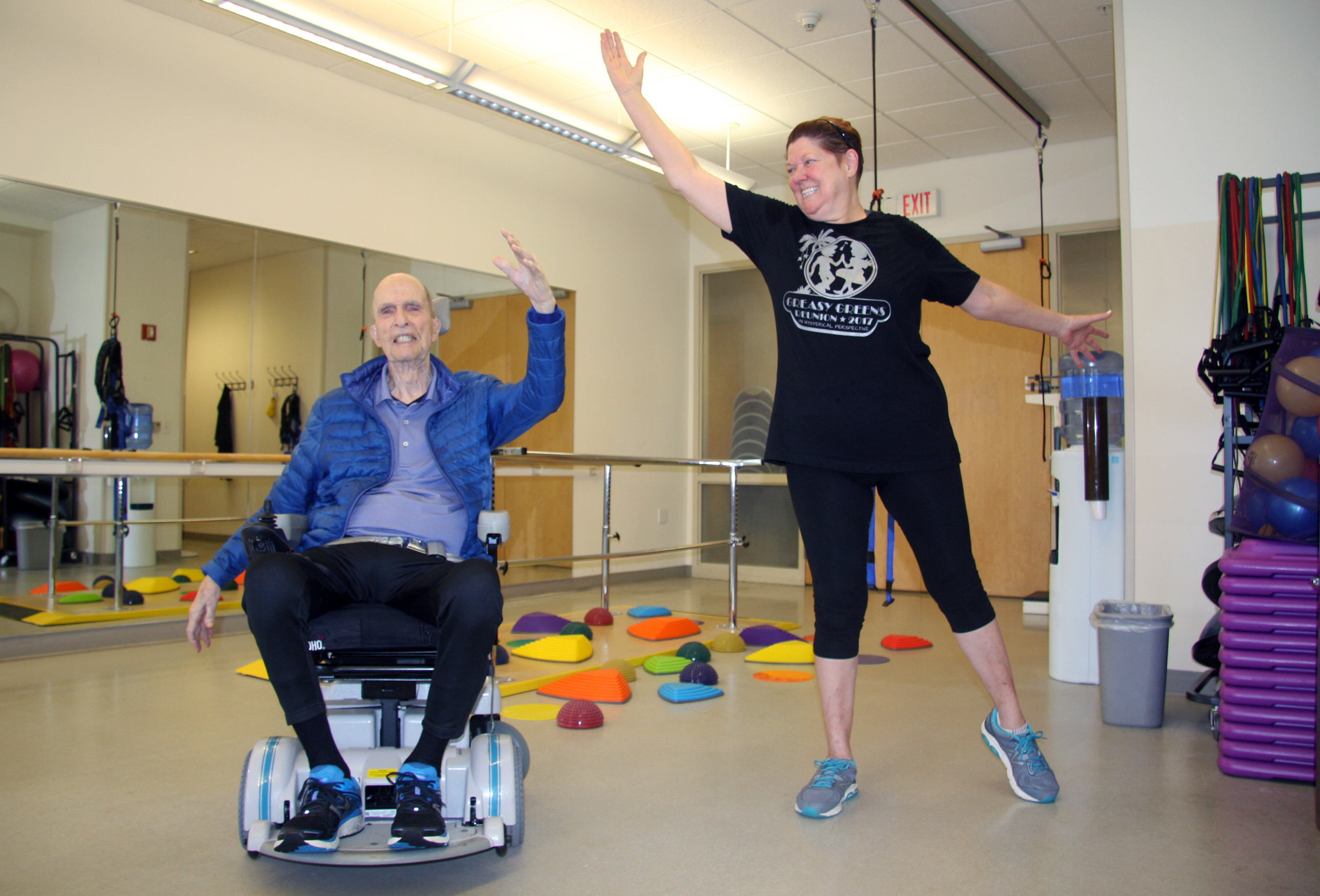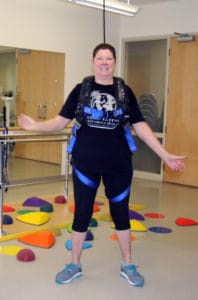Two Grants Allow UAMS to Start Free Exercise Program for People with Parkinson’s
| The University of Arkansas for Medical Sciences (UAMS) has received two grants totaling almost $29,000 to launch a free exercise program for people with Parkinson’s disease and Parkinsonism.
The Parkinson’s Foundation provided $13,924.59 to train, staff and support the program, and the Philip R. Jonsson Foundation of Little Rock provided $15,000 for the equipment.
“Treating Parkinson’s disease involves treating the whole person, and that means going beyond what we can accomplish during a clinical visit,” said Rohit Dhall, M.D., director of Neurodegenerative Disorders in the UAMS Department of Neurology. “I am so happy that the central Arkansas Parkinson’s community will be able to benefit from this evidence-based, high-quality exercise program — all free of charge.”

From left, Suzanne Jonsson, daughter; Philip R. Jonsson; Diane Jonsson, wife; Lehzhey Moseley, with the Jonsson family; Lisa Nation, fitness instructor; Cody Rainey, physical therapist; Kellie Coleman, fitness instructor; Chris Oholendt, program manager for UAMS Outpatient Physical Therapy/Occupational Therapy; and Linda Ehemann, member of the Ottenheimer gym.Amy Widner
Classes begin Aug. 20 and meet from 2:30-3:20 p.m. on Tuesdays and Thursdays in the Ottenheimer Fitness Center in the UAMS Donald W. Reynolds Institute on Aging, 629 Jack Stephens Drive. Parking is available immediately outside the facility. For more information, call 501-766-5045.
The Parkinson’s Foundation funded Parkinson’s Wellness Recovery (PWR!) certification in both PWR!Moves® Group and PWR!Moves® Circuit Classes for the program’s fitness instructors. The grant also provided funding to certify a Parkinson’s disease-specialized physical therapist in research-based exercise approaches and task-specific training routines.

The grants helped purchase a Solo-Step overhead track and harness system. The torso harness attaches with ropes to a ceiling track that runs along the length of the room, allowing participants with concerns about balance or strength to exercise safely.Amy Widner
PWR!Moves® Group Class teaches participants how to move bigger and faster in everyday life and counteract Parkinson’s Disease symptoms. Participants are challenged physically and cognitively in a fun, supportive environment.
PWR!Moves® Circuit Class integrates PWR!Moves® into sports, fitness and more traditional gym activities such as strength, agility, balance, coordination and flexibility training. Participants work independently or with partners at different exercise stations, each with a different focus. By design, this class encourages problem solving, fast processing and sequencing that keeps the experience challenging.
The exercise regimen is based on best practices for people with Parkinson’s disease. Participants will receive individualized feedback on their exercise needs and goals while participating in a group exercise setting. The program focuses on maintaining strength, improving balance, challenging the brain and facilitating social connections for a better quality of life.
The program is designed to meet the needs of people with a variety of fitness levels and Parkinson’s symptoms. For example, part of the Jonsson Foundation grant funded the purchase of a Solo-Step overhead track and harness system. The torso harness attaches with ropes to a ceiling track that runs along the length of the room, allowing participants with concerns about balance or strength to exercise safely.
“Our approach combines the best of an individualized exercise experience with the social nature of group exercise,” said Chris Oholendt, program manager for UAMS Outpatient Physical Therapy/Occupational Therapy, who administers the grants. “We are thrilled to provide people with Parkinson’s and their care partners this unique program that will change the way they live with PD for the better.”

The grants funded equipment that helps people with Parkinson’s practice walking on uneven surfaces.Amy Widner
Parkinson’s disease affects nearly 1 million Americans and 10 million worldwide. It is the second-most common neurodegenerative disease after Alzheimer’s and is the 14th-leading cause of death in the United States. It is associated with a progressive loss of motor control (shaking or tremor at rest and lack of facial expression), as well as non-motor symptoms (depression and anxiety). There is no cure for Parkinson’s and 60,000 new cases are diagnosed each year in the United States alone.
The Parkinson’s Foundation works to better the lives of people with Parkinson’s disease by improving care and advancing research toward a cure. For more information, visit parkinson.org or call 800-4PD-INFO (473-4636).
UAMS is the state’s only health sciences university, with colleges of Medicine, Nursing, Pharmacy, Health Professions and Public Health; a graduate school; a hospital; a main campus in Little Rock; a Northwest Arkansas regional campus in Fayetteville; a statewide network of regional campuses; and eight institutes: the Winthrop P. Rockefeller Cancer Institute, Jackson T. Stephens Spine & Neurosciences Institute, Harvey & Bernice Jones Eye Institute, Psychiatric Research Institute, Donald W. Reynolds Institute on Aging, Translational Research Institute, Institute for Digital Health & Innovation and the Institute for Community Health Innovation. UAMS includes UAMS Health, a statewide health system that encompasses all of UAMS’ clinical enterprise. UAMS is the only adult Level 1 trauma center in the state. UAMS has 3,485 students, 915 medical residents and fellows, and seven dental residents. It is the state’s largest public employer with more than 11,000 employees, including 1,200 physicians who provide care to patients at UAMS, its regional campuses, Arkansas Children’s, the VA Medical Center and Baptist Health. Visit www.uams.edu or uamshealth.com. Find us on Facebook, X (formerly Twitter), YouTube or Instagram.###

